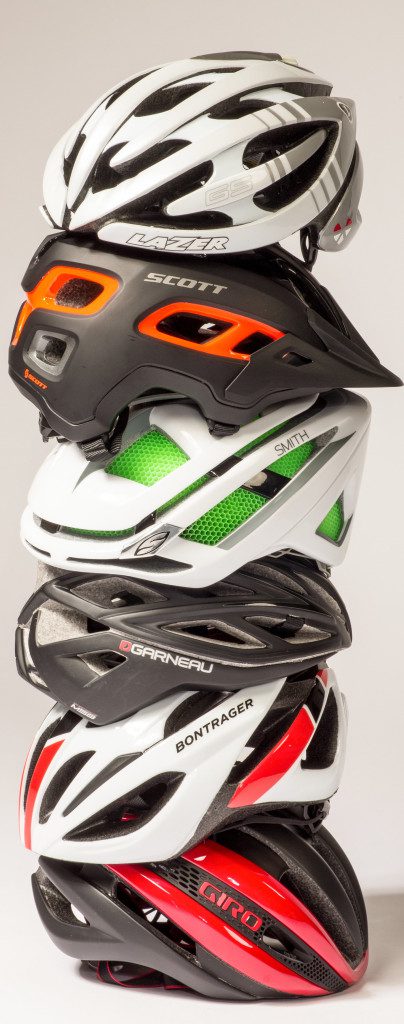2015 buyers’ guide: Helmets
Our buyers' guide offers a sampling of the best helmets available on the market today.

Lazer GS Lifebeam
The GS Lifebeam combines protection with wearable technology. A sensor in the headband detects your heart rate. A processing unit at the back of the helmet then transmits the data via Bluetooth or ANT+ to your bike computer or smartphone. The setup means you can ditch the chest strap. The sensor and unit only add 40 g. The helmet has 19 vents to allow air to move across your head. It comes in medium and large sizes. ($300, livetoplaysports.com )
Scott Stego
Mountain bike riders looking for excellent coverage and protection will be impressed with the Stego. The helmet not only features category-leading coverage, but Scott has also included MIPS (multi-directional impact protection system), which lessens the effects of rotational forces on your brain in a crash. And yet even with all this extra coverage, the Stego is surprisingly comfortable in warm weather thanks to a number of large cooling vents. ($200, scott-sports.com)
Smith Optics Overtake
While road riders may initially be drawn to the overtake’s unique esthetics, the helmet also offers numerous, more function-oriented features. Smith uses its unique Koroyd construction, which consists of a highly energy-absorbent material (the vibrant green core) that’s encased in a more conventional EPS frame. The combination of the EPS shell and Koroyd’s hollow shape allows for excess heat to easily escape and should help keep riders comfortable in warm conditions. The helmet’s shape also delivers exceptional wind-tunnel tested aero benefits. Smith has added channels on the top of helmet that will hold your sunglasses. ($285, smithoptics.ca)
Louis Garneau X-Lite
Louis Garneau’s lightest helmet (claimed 195 g) sits on the head of Europcar climbers during mountain stages. While it doesn’t weigh them down much, it does allow a lot of air to pass through its 37 vents as they huff and puff during a hard stage. The helmet has a lot of reinforcement, a ring-shaped bit of plastic protection at the base and u-shaped ribs that make up the shell. ($170, louisgarneau.com)
Bontrager Starvos
The Starvos provides excellent protection at a good price. It’s made via an in-mould process, in which the shell and the EPS foam are set at the same time. You can adjust the fit with Bontrager’s Headmaster II system, snugging up the lid with one hand. If the helmet pads get funky from your sweat, you can remove and wash them. A mediumsize Starvos weights 267 g. ($75, bontrager.com)
Giro Synthe
The Giro Synthe manages to combine three seemingly conflicting qualities: an aero shape, good ventilation and low weight. Giro claims that the Synth (thanks to its sleek shape and unusual mesh side panels) is more aerodynamically efficient than many more radicallooking aero-specific helmets. For ventilation, Giro has added 19 vents for cooling at all riding speeds. on the weight front, the Synth comes in at about 250 g for a medium, making it one of the lighter helmets on the market. Finally, while the shape may not appeal to every rider, there’s no denying that the Synth is a good looking helmet. ($360, ogc.ca)
—by Gus Alexandropoulos

